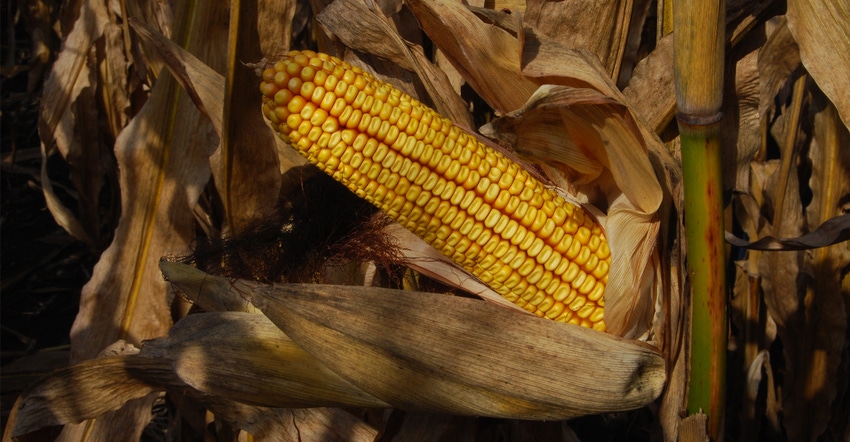September 16, 2019

The 2019 growing season will likely go down in history as one of the most unusual ever from a national perspective. Record late planting and slow crop development have created many concerns about crop maturity and the threat of damage from early frost.
Iowa has been the garden spot this growing season, compared to other states. However, even Iowa has had areas where a lot of the corn crop was planted the first week of June. Will June-planted corn mature on time, and what kind of yield levels will it produce?
The site Useful to Usable uses local information to predict crop development and crop maturity. This website indicates that even a 100-day hybrid planted June 6 near Kanawha in northern Iowa would reach maturity by early October.
Part of the reason it would reach maturity by early October is that corn hybrids require fewer growing degree days to reach maturity the more the planting date is delayed. In this case, this 100-day hybrid requires 200 GDDs less to reach maturity because of the month delay in planting.
However, this website also predicts there is a 35% chance that frost damage from a 28-degree-F temperature will adversely affect the corn crop with a June 6 planting date.
Gauging corn kernel development
When all or nearly all kernels are dented, a distinct white line appears on the kernels, known as the milk line. It appears near the dent end and moves toward the tip of the kernels as the kernels mature. When the milk line reaches the tip, it forms a black layer which means the corn has reached physiological maturity and is safe from frost.
Frost damage to corn that has reached the half milk line stage of development may only reduce corn yields a few percentage points — from a light frost that just kills a few upper leaves and doesn’t kill the stalk. A more severe frost — where temperatures dip to 28 degrees and stay there for three to four hours — may reduce yields by up to 15%.
What will the one-month delay in planting date create for the corn crop in northern Iowa? Research at Iowa State University’s Northern Research Farm near Kanawha shows that a planting date delay from early May to late-May could create as much as a 25% decline in corn grain yields as in 2018, and as little as 12% as it did in 2017.
The growing season conditions this summer were fairly good, and the crop development progress on the June-planted corn looks good. But as I write this in September, it’s too early to predict the yield levels of the June-planted corn crop.
Drying cost vs. potential for crop loss
A big concern in 2019 is crop maturity and drydown rate. Corn grain drydown on the ears on stalks in the field can be predicted by fall growing degree days. However, the rate of field drying of corn slows considerably after mid-October.
The cost to dry 200-bushel-per-acre corn is $7.61 per point of moisture removed. This cost per acre assumes $0.0375 per bushel per point commercial drying cost and 1.45% shrink per bushel.
The cost of LP gas to dry 200 bushels of corn is $4.40 per point. This assumes 0.02 gallon of LP to dry 1 bushel of corn 1 point of moisture and $1.10 per gallon LP cost. This cost does not include the cost of electricity or the fixed costs of drying equipment, grain handling equipment or storage structures.
Consider drying costs and potential preharvest crop losses when delaying harvest to save grain drying costs. Two to 3 bushels of crop loss per acre before harvest can exceed the costs to remove 1 point of grain moisture on a per acre basis.
Kassel is an ISU Extension field agronomist in northwest Iowa. Contact him at [email protected].
About the Author(s)
You May Also Like






